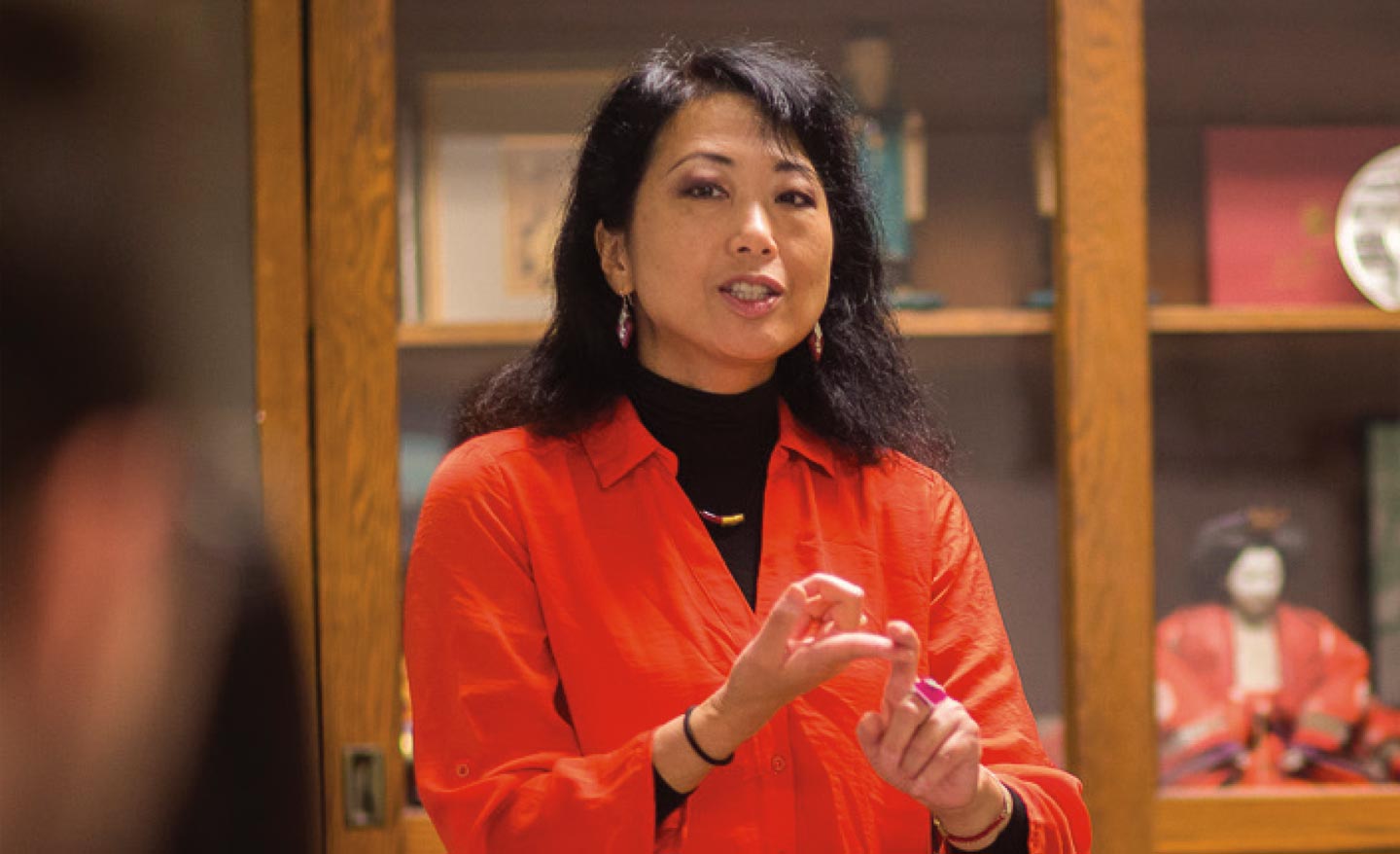Putting Language Learning to Work
New classes are helping students build stronger connections between language learning and professional success.
Professor Hisae Kobayashi was inspired to develop a new course, “Japanese for the Professions,” after a student asked for help refining a job application.
“This suggested that there was a need for Japanese speakers to learn how to write appropriately to find future employment,” Kobayashi said.
The course is part of a series of new language classes developed collaboratively by Conn faculty and Hale Center for Career Development staff to help students build stronger connections between language learning and professional success.
Funded in part by a U.S. Department of Education grant, these Languages for the Professions classes “fit perfectly with Conn’s curriculum,” said Kobayashi, a senior lecturer in Japanese at Conn since 1999.
Kobayashi’s course teaches students the ins and outs of approaching potential employers in Japan in their native language. A final project asks each student to write an essay that introduces themselves and outlines a valuable experience from their collegiate career.
“They become better skilled at articulating what they want to say,” Kobayashi said.
This semester, Visiting Assistant Professor of Italian Studies Matteo Pace is teaching “Italian in the Workplace,” a course originally designed by Chair of Italian Studies Frida Morelli. Other courses in the series include “German for Business Culture,” “Spanish for the Professions” and “Chinese for the Professions.”
Associate Professor of Classics Darryl Phillips conceived of his class, “Medical Terminology from Latin,” as a means of supporting students considering careers in healthcare. Developed in collaboration with Conn’s pre-health advisers, the course follows a structured approach: students learn how Latin terms are constructed syntactically, giving them the skills to better interpret Latinate terms in medical and scientific settings.
“Teaching these courses provides a new way to think about Latin and Greek language,” Phillips said. “It also offers me a chance to connect with a new group of students who wouldn’t otherwise be exposed to ancient Greek, Latin and classics faculty.”
Hannah Megathlin ’20, who double majored in biology and classics at Conn, took Phillips’s class when she was a student because it offered a unique way to combine her two fields.
“I knew about these two subjects separately but hadn’t extensively studied the place where they overlap,” said Megathlin, who is now pursuing a doctorate in biomedical sciences.
For Phillips, the takeaway is that his course has been truly collaborative—both in its creation and its execution in the classroom.
“I’m an expert in the ancient languages, I’m not a scientist or a medical professional,” he said. “Students contribute by bringing in their own experiences as science students aiming at a career in health fields.”
The give and take during in-class exercises is, he added, “a real interdisciplinary undertaking and a great example of the liberal arts in action.”
